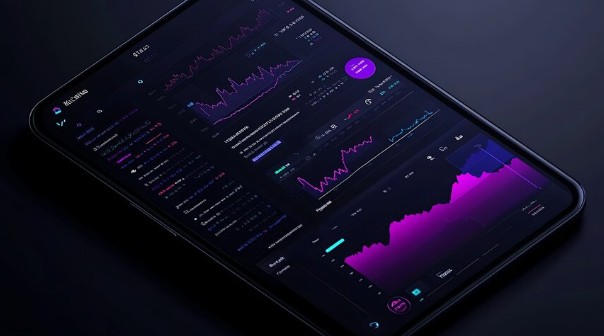Futures trading is a complex, high-stakes arena where knowledge, speed, and strategic insight converge to determine success. In such a dynamic environment, the role of a futures broker becomes not just beneficial, but essential. Whether you’re a seasoned trader managing a sophisticated portfolio or a newcomer learning the ropes, a futures broker can make or break your experience. This comprehensive article explores what makes a futures broker invaluable, detailing ten distinct ways brokers assist clients in critical trading situations. We also take a deep dive into why E-Futures.com, powered by the CannonX platform, stands out among the best futures brokers in the industry.
What is a Futures Broker?
A futures broker is a registered professional or firm that facilitates the buying and selling of futures contracts on behalf of clients. They act as intermediaries between traders and exchanges, providing access to trading platforms, research tools, and market data. More importantly, futures brokers offer strategic advice, help manage risk, and ensure compliance with industry regulations. Their role has evolved significantly over the decades, adapting to changing market dynamics and technological innovations.
10 Critical Ways Futures Brokers Assist Clients
- Risk Management and Hedging Strategies
Futures brokers help clients identify exposure to market risks and implement hedging strategies accordingly. For example, a commodities trader may hedge their position using futures contracts to lock in pricing. The risk involved includes misaligned hedges that could reduce potential profits if the market moves favorably. However, the benefit is protection against drastic losses, especially in volatile markets. Additionally, brokers assist clients in using stop-loss orders, trailing stops, and protective puts to cap downside exposure.
- Market Research and Analysis
Top futures brokers provide in-depth market reports, real-time analytics, and trading insights. By analyzing market trends, economic indicators, and technical patterns, they help clients make informed decisions. The risk is that no analysis can guarantee market movement, but the benefit is significantly improved forecasting accuracy. Brokers also often use proprietary algorithms to flag potential breakout opportunities or reversal signals, helping traders stay one step ahead.
- Order Execution Speed and Accuracy
In futures trading, seconds can determine the difference between profit and loss. Futures brokers ensure quick and accurate execution of trades, often via advanced platforms like CannonX. Risks include slippage or execution at less favorable prices due to latency, while the benefit lies in optimizing entry and exit points. In many cases, high-frequency trading strategies depend entirely on the broker’s technological infrastructure.
- Personalized Trading Support
Clients often require tailored solutions. Whether managing complex spread strategies or choosing the right futures contracts, futures brokers provide personalized assistance. The risk may stem from over-reliance on the broker’s guidance, but the benefit is access to expert insight that matches the client’s trading profile. Personalized support can involve one-on-one coaching sessions, strategic reviews, and even custom-built trading models for advanced clients.
- Real-Time Risk Monitoring Tools
Modern futures brokers provide real-time account monitoring tools that alert clients to margin calls or unusual positions. Risks include technical failures, but the benefits ensure that traders remain compliant and can act quickly to mitigate losses. Real-time visibility into equity levels, position size, and net liquidity helps traders make swift decisions that can preserve their capital during downturns.
- Regulatory Compliance and Transparency
Navigating the rules of futures trading can be daunting. Futures brokers ensure client trades meet regulatory requirements, thereby avoiding penalties or account freezes. The risk is minimal, but the benefit includes peace of mind and operational continuity. A broker well-versed in regulation will also help clients understand exchange fees, tax obligations, and record-keeping responsibilities.
- Platform Access and Training
Clients gain access to robust platforms like CannonX, which offers high-speed execution, customizable interfaces, and analytical tools. Futures brokers often provide onboarding, tutorials, and live support. Risks may include a learning curve, but the benefit is the empowerment to execute strategies independently. The best brokers integrate API capabilities, plug-ins, and mobile apps to give clients full control over their portfolios anytime, anywhere.
- Account Customization
From self-directed to broker-assisted and institutional-level accounts, a good futures broker provides flexible structures. The risk lies in choosing a mismatched account type, but the benefit is an optimized experience tailored to the client’s skill level and needs. Clients trading futures can also opt for custodial accounts, corporate accounts, or managed accounts based on their trading goals.
- Customer Service and Availability
Unlike firms that rely on automated systems, the best futures brokers like E-Futures.com offer direct access to seasoned brokers. There’s no automated answering service, reducing the risk of miscommunication and enhancing the benefit of responsive, knowledgeable support. Having real-time access to a human expert can resolve margin alerts, technical errors, or market volatility situations instantly.
- Educational Resources and Continuous Learning
Staying current with market shifts is vital. Futures brokers offer webinars, guides, and one-on-one coaching. The risk is low, while the benefit is staying ahead in an ever-evolving market. Traders can often find beginner tutorials, live trading examples, expert roundtables, and community forums offered by leading brokers to promote constant learning.
Why E-Futures.com and CannonX Stand Out
Among the crowded field of futures brokers, E-Futures.com has earned its reputation as one of the best futures brokers through a commitment to excellence, transparency, and client satisfaction. The CannonX platform further solidifies their status as leaders in futures trading. Here’s why:
Decades-Long Legacy
With roots stretching back decades, E-Futures.com has weathered market cycles, regulatory changes, and technological revolutions. This longevity speaks volumes about their resilience and ability to adapt. Few futures brokers can boast such a consistent and admired track record. Longevity in this industry also suggests client loyalty, adaptability, and an understanding of economic evolution.
Top-Notch Customer Support
Where other brokers use bots or call-routing trees, E-Futures.com prides itself on no automated answering services. Clients speak directly to brokers—many of whom bring decades of experience. This personalized approach makes all the difference during critical trading moments. For example, during a flash crash or commodity shock, clients can count on immediate human help.
TrustPilot 5-Star Ratings
Client feedback speaks volumes. E-Futures.com boasts numerous 5 out of 5-star TrustPilot reviews, showcasing their commitment to client satisfaction, transparency, and responsive support. Their reputation for integrity and performance sets them apart from other futures brokers. These ratings affirm the company’s customer-first philosophy, timely executions, and low commission structures.
Free Access to Top Trading Platforms
Whether it’s the proprietary CannonX or leading third-party platforms, E-Futures.com offers clients a wide selection of FREE, top-tier trading solutions. This removes barriers to entry and allows traders to focus on strategy, not software costs. Traders can access TradingView, MetaTrader, CQG, and more through their accounts—each integrated into the broker’s ecosystem.
Regulatory Excellence
E-Futures.com has earned an exemplary record with industry regulators. This means client funds are handled according to strict compliance standards. Their transparency and adherence to regulation add a layer of trust essential for long-term trading relationships. E-Futures.com is a registered member of the NFA and is overseen by the CFTC, ensuring adherence to U.S. law and client fund protection.
CannonX: The Trader’s Platform
The CannonX platform is engineered for performance. With lightning-fast execution, real-time risk management, customizable layouts, and intuitive interfaces, CannonX equips traders with the tools they need for success. This state-of-the-art platform is a key reason E-Futures.com remains among the best futures brokers in the world. Users benefit from sophisticated charting tools, built-in news feeds, algorithmic trade scripting, and ultra-low latency infrastructure.
Client Testimonials and Industry Trust
E-Futures.com’s reputation isn’t built on marketing alone. Client testimonials highlight long-term satisfaction, quick resolutions, and tailored advice. Many have remained with the platform for over a decade, citing its stability and broker accessibility. Industry watchdogs and analysts often rank E-Futures.com high on transparency, fee structure, and customer satisfaction.
Competitive Fee Structure
While some brokers embed hidden costs, E-Futures.com maintains clear, competitive fee transparency. There are no surprise charges for data feeds or platform access. This financial clarity makes them particularly attractive for high-frequency or volume traders where fees can erode returns.
Global Reach and Diverse Instruments
Although rooted in U.S. markets, E-Futures.com provides access to global futures trading instruments—commodities, indices, interest rates, crypto, and energy contracts. This gives clients a one-stop shop for portfolio diversification across geographies and sectors. Their tools accommodate both speculative and hedging strategies.
The role of a futures broker in today’s financial ecosystem is more critical than ever. From helping manage risk to providing advanced trading tools and personalized support, their contributions are indispensable. For traders seeking the very best, E-Futures.com and its CannonX platform offer a compelling, value-driven experience that stands head and shoulders above the competition. With a proven legacy, unbeatable customer service, regulatory excellence, and a commitment to empowering traders at all levels, they are rightly considered one of the best futures brokers in the industry.
Whether you’re a retail investor entering the futures trading space or a hedge fund requiring institutional capabilities, the right broker matters. E-Futures.com brings every element a client could want—integrity, performance, education, and real-world results. As the industry evolves, one thing remains constant: E-Futures.com and CannonX will continue leading the charge in trading futures.
To open an account with E-Futures.com, please click here.
Ready to start trading futures? Call US 1(800)454-9572 – Int’l (310)859-9572 email info@cannontrading.com and speak to one of our experienced, Series-3 licensed futures brokers and start your futures trading journey with E-Futures.com today.
Disclaimer – Trading Futures, Options on Futures, and retail off-exchange foreign currency transactions involves substantial risk of loss and is not suitable for all investors. Past performance is not indicative of future results. You should carefully consider whether trading is suitable for you in light of your circumstances, knowledge, and financial resources. You may lose all or more of your initial investment. Opinions, market data, and recommendations are subject to change at any time.
Important: Trading commodity futures and options involves a substantial risk of loss. The recommendations contained in this writing are of opinion only and do not guarantee any profits. This writing is for educational purposes. Past performances are not necessarily indicative of future results.
**This article has been generated with the help of AI Technology. It has been modified from the original draft for accuracy and compliance.
***@cannontrading on all socials








